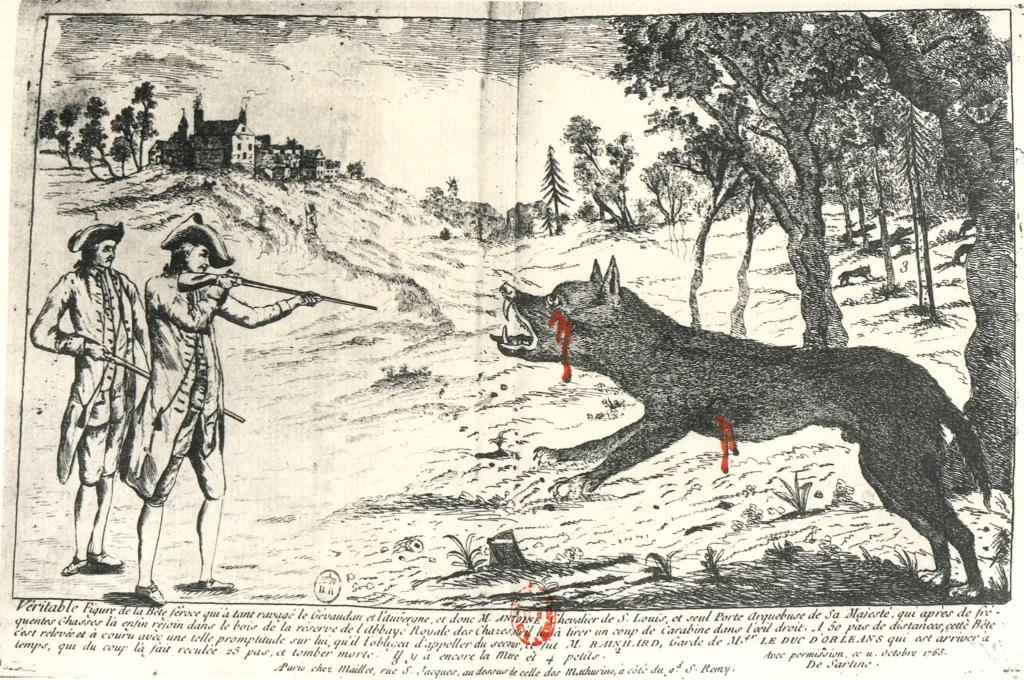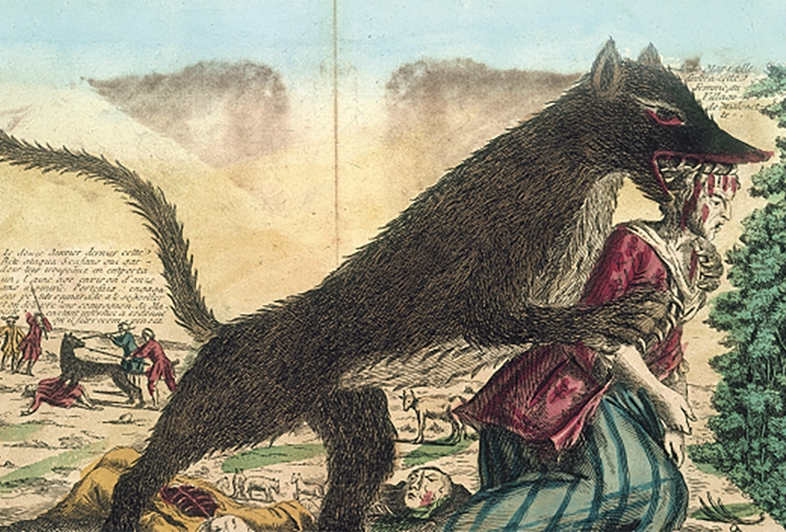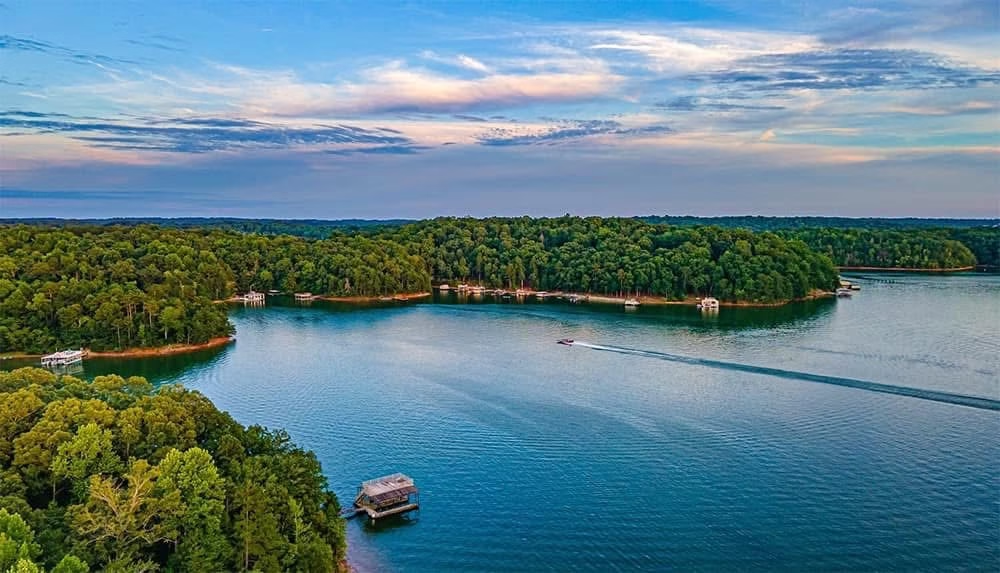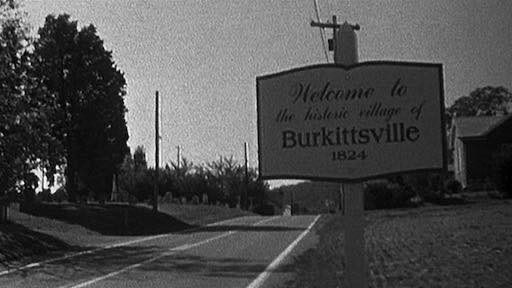In the mid-18th century, while much of Europe obsessed over witch hunts, a very different horror gripped rural France. In the rugged hills and forests of Gévaudan (modern-day Lozère and Haute-Loire), villagers whispered of a creature unlike any wolf they had ever seen. Between 1764 and 1767, this so-called Beast of Gévaudan was blamed for more than 100 gruesome deaths, turning an isolated region into the epicentre of a national panic.

A Monster Stalks the Countryside
Eyewitnesses described a terrifying predator:
- As large as a calf or small cow, covered in reddish-brown fur with a dark stripe down its back.
- Equipped with enormous jaws and a long tail, it was said to shrug off bullets.
- Its attacks were brutal—throats ripped out, bodies mutilated, and victims left as though savaged by something beyond a normal wolf.
Women and children were the most frequent victims, and villages locked their doors at dusk in fear of what might lurk in the shadows.

Royal Intervention: King Louis XV Steps In
The killings became a national scandal, reaching the court of King Louis XV. The king dispatched professional hunters, including royal gunbearer François Antoine, who in 1765 killed a massive wolf. For a brief moment, France rejoiced, believing the nightmare was over.
But the attacks continued. This failure sparked whispers that either Antoine had slain the wrong animal or that more than one beast prowled the countryside. The terror only ended in June 1767, when a local hunter, Jean Chastel, shot and killed another unusually large wolf—reportedly using a blessed bullet. After Chastel’s kill, the bloodshed abruptly ceased.
What Was the Beast of Gévaudan? Competing Theories
Over the centuries, the mystery of the Gévaudan werewolf has inspired speculation, folklore, and even films. Historians, cryptozoologists, and storytellers have proposed several explanations:
1. An Exceptionally Large Wolf or Pack of Wolves
Many experts think the Beast was simply an unusually big wolf—or multiple wolves—that preyed on humans when food was scarce. Wolves were common in 18th-century France, and this theory aligns with historical records. Yet, villagers insisted it looked and acted differently from ordinary wolves, moving with uncanny speed and seeming impervious to gunfire.

2. An Exotic Predator
Others suggest the creature was not a wolf at all but an escaped exotic animal, such as a lion, hyena, or big cat from a private menagerie. Its unusual size, ambush tactics, and preference for attacking the throat fit with big cat behaviour. The drawback? Exotic animals were rare in rural France, and surviving unnoticed in a foreign climate would have been difficult.
3. A Wolf-Dog Hybrid
Some theorists believe the Beast may have been a wolf-dog hybrid, potentially explaining its strange appearance and boldness around humans. Hybrids can be larger and behave unpredictably. Still, this idea struggles to explain claims of near-invulnerability or the sheer scale of its attacks.
4. A Supernatural Werewolf
Given the era’s strong belief in curses and shapeshifters, many locals were convinced they faced a real werewolf. Legends of silver or blessed bullets killing the Beast added to its supernatural aura. Modern historians consider this part of the folklore that grew around the events—but it’s exactly this mystical element that keeps the story alive today.
The Silver Bullet Myth
The famous tale that Chastel used a silver bullet blessed by a priest is one of the most enduring parts of the legend. Yet contemporary records don’t confirm it. Many researchers believe this detail was added later to dramatize the story and link it to werewolf mythology. Still, the image of a silver bullet felling a supernatural predator has become inseparable from the Beast’s legend.
Why Did the Attacks Stop?
When Chastel’s wolf was killed, the attacks suddenly ended. This could mean:
- He truly shot the primary predator responsible.
- Several animals had been involved, and the remaining ones were killed or fled.
- Villagers may have been better prepared or less likely to wander alone, reducing opportunities for attack.
- Over time, the story may have grown through fear and rumor, and when the panic eased, so did reports.
The Legacy of the Gévaudan Werewolf
The Beast of Gévaudan remains one of France’s most chilling unsolved mysteries. It represents a meeting point of history and folklore—a real series of killings wrapped in the supernatural beliefs of the time. The legend has inspired books, films such as Brotherhood of the Wolf, and countless online theories.
For modern readers, the tale endures because it’s more than just a historical footnote—it’s a glimpse into a world where the dark forest could still hide monsters, where a king’s hunters couldn’t guarantee safety, and where fear turned a wolf into a werewolf.
Final Thoughts
Whether the Gévaudan werewolf was a wolf, a hybrid, an exotic predator, or something otherworldly, it left an indelible mark on French folklore. The Beast’s story is a reminder that the line between reality and legend can blur, especially when fear and mystery are involved. Even today, more than 250 years later, the hills of Gévaudan echo with whispers of the monster that once prowled its woods.



